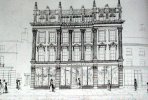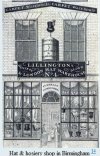For those interested in the Georgian lifestyle, apparently the book "Diary of a Georgian Gentleman" has just been reduced in price by the publishers. Haven't read it , though, so can't comment on content . See
https://www.parishchest.com/index.php?cmd=viewproduct&cat=&id=P92359&pageOffset=0
I bought this book and have now finished reading it. Enjoyed the book, thanks for the pointer Mike. Amazed at how the small daily details religiously recorded by the gentleman, Richard Hall, can provide such interesting reading! It's mostly focussed on London, but Birmingham does get an interesting mention as follows:
"..... there had long been a shortage of copper coins in circulation and this was to
continue until 1797 when the firm Matthew Boulton in Soho, near Birmingham were
authorised to produce copper coins with an intrinsic value of 2d and 1d. This marked a
significant change of venue - all official coins had been minted at the Tower Mint since
the reign of Queen Anne. The coins were beautifully impracticable - massive, since the
twopence coin weighed two ounces and was therefore intended to contain twopence of
pure copper" These coins known as 'cartwheel coins' would have ruined pockets and
sadly were never very popular. Just 8 of the copper 2d coins weighed in at one pound!
Viv.






